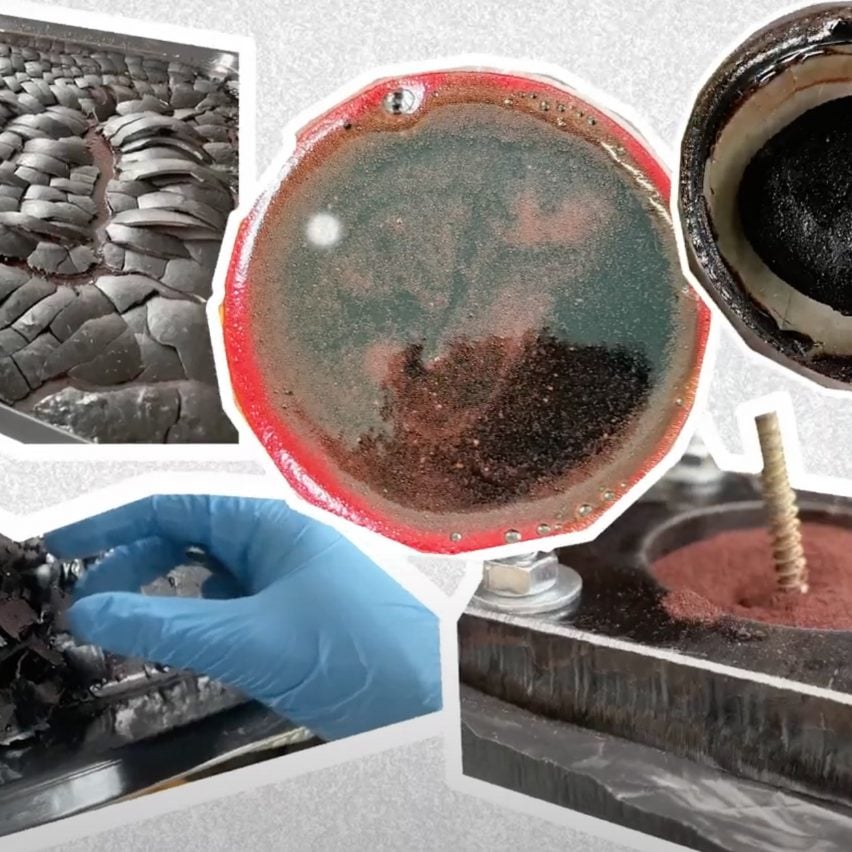The Academy of Fine Arts and Design at the University of Ljubljana is showcasing a range of innovative and thought-provoking student projects. The Industrial Design course, the only university-level programme of its kind in Slovenia, emphasises responsible, critical, and future-oriented design. Students are encouraged to address the complexities of modern life through sustainable, research-driven solutions. From biodegradable packaging to reimagined burial practices, these projects demonstrate the creativity and ingenuity of the next generation of designers.
- 0.1 Woodn’t it be nice? – Addressing Forest Imbalance
- 0.2 Seapack: Sustainable Packaging from Seagrass
- 0.3 Coffee Machine Concepts: Cohesion Through Restraint & Disruption Through Expression
- 0.4 Pizza and Bread Kit: Enhancing the Home Baking Experience
- 0.5 Kärcher Accessories: Shared Learning and Accessibility
- 0.6 What Remains? Reimagining Burial Practices
- 0.7 Wildleaf: Connecting Children with Nature Through Play
The University of Ljubljana offers a vertically integrated path from Bachelor’s to PhD level, combining practical design skills with theoretical knowledge and a strong understanding of social, technological, and environmental contexts. Its interdisciplinary approach is grounded in design methodology, systems thinking and user-centred innovation. Students collaborate with public and private partners, tackling real-world challenges in areas such as sustainable product design, service innovation, circular economy strategies and social impact. The programme also places a strong emphasis on visual literacy, enabling students to critically analyse and communicate complex ideas through design.
Here’s a closer look at some of the standout projects:
Woodn’t it be nice? – Addressing Forest Imbalance
Zoja Čepin, Jure Kralj, Maša Kralj, Klara Maček and Leon Rojk Štupar have collaborated on ‘Woodn’t it be nice?’, a project that raises awareness of human impact on forest ecosystems. The project focuses on the ecological degradation caused by monoculture plantations and bark beetle overpopulation. The students have designed an educational observatory and multi-species feeder to address knowledge gaps and promote more resilient forest management approaches. This project highlights bark beetle overpopulation as a symptom of ecological imbalance and encourages reflection on current forestry practices.
Seapack: Sustainable Packaging from Seagrass
Umihana Dizdarevič, Marko Gorenak, Anja Tudjan and Nina Vranješ have developed ‘Seapack’, an innovative solution that transforms washed-up seagrass into biodegradable packaging. Faced with the problem of polystyrene pollution and the wasted resource of seagrass collected from beaches, the team reimagined marine waste as a sustainable alternative to Styrofoam. Seapack is light, sturdy, and saltwater-degradable, offering a natural and circular solution.
Coffee Machine Concepts: Cohesion Through Restraint & Disruption Through Expression
Two groups of students explored contrasting approaches to designing coffee machines for professional environments.
- Cohesion Through Restraint: Zoja Čepin, Marko Gorenak and Anja Tudjan focused on creating machines that integrate seamlessly into their surroundings. Their designs emphasised clarity, restraint, and spatial sensitivity, catering to specific user scenarios and presented with refined visualisations.
- Disruption Through Expression: Maša Kralj, Klara Kisewetterova and Jaka Kordiš took a radically different approach, viewing the coffee machine as a vehicle for expression and a visually prominent object. Their experimental and expressive concepts challenged typical expectations and reimagined the appliance as a design statement.
Pizza and Bread Kit: Enhancing the Home Baking Experience
Matic Lesjak and Črt Štrubelj, in collaboration with Hisense, developed a ‘Pizza and Bread Kit’ to improve product functionality and enhance the home baking experience. Observing that home ovens often fail to deliver satisfactory pizza results, they redesigned baking tools to improve oven performance and make quality outcomes more accessible. The kit includes a PizzaPeel, PizzaTray with precise heat control, and a PizzaBoard with a dough shaping guide.
Kärcher Accessories: Shared Learning and Accessibility
- Kärcher 2wsa: Gal Grobovšek designed the Kärcher 2WSA, a two-way hose splitter and pressure adjuster for power washers. This accessory enables independent control of water pressure, supporting shared use between adults and children. It serves as an educational tool, introducing children to safety, cleanliness, and a strong work ethic.
- Kärcher Box: Rin Togo created ‘Kärcher Box’, a rental service designed to make Kärcher’s high-pressure washers more accessible. Based on user research, the service offers a flexible and affordable on-demand solution for urban dwellers with limited storage space. Users can reserve a washer via an app and collect it from a distinctive yellow box located at local stores.
What Remains? Reimagining Burial Practices
Jaka Kordiš, Matic Lesjak and Črt Štrubelj created ‘What Remains?’, a speculative design project that reimagines burial as an act of returning resources to the earth. The project proposes using the deceased’s blood and hair to form a biodegradable urn, questioning the use of extractive materials in traditional urns. Through coagulation, dehydration, and compression, they created a composite that gently breaks down over time, inviting reflection on mourning, legacy, and approaching death with care.
Wildleaf: Connecting Children with Nature Through Play
Mark Majcen and Ognjen Todorović developed ‘Wildleaf’, a collection of wooden action toys inspired by forest life. These toys, featuring mushrooms, insects, and animals, are designed to bring nature closer to children through imaginative play. Each figure is composed of ball-joint modules, allowing children to assemble and pose them in various ways. Crafted from beech wood, the toys are durable, easy to produce, and safe for children.


